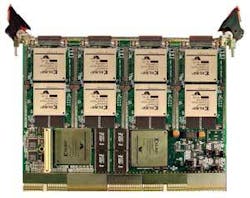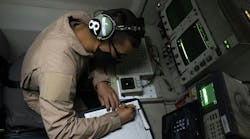By Courtney E. Howard
GLASGOW, Scotland - Nallatech Ltd. in Glasgow Scotland worked with the Northrop Grumman Corp. Space Technology segment in Redondo Beach, Calif., to develop a test platform for space-borne processing.
Northrop Grumman issued a $2.1 million contract to Nallatech to work on the field-programmable-gate-array (FPGA) system development. Nallatech’s field-application engineers and technical specialists supported Northrop Grumman Space Technology systems engineers in creating an FPGA platform that provided the ideal test bed for their satellite applications.
The system involves several CompactPCI cards and chassis, with a custom I/O card providing as much as 16 gigabits per second of bandwidth between units.
This application uses Nallatech’s BenERA, BenDATA-II, BenDATA-WS, BenBLUE-II, and BenPRO hardware products to provide processing through Xilinx FPGAs. The architecture was designed to make the FPGA the main processing engine.
The Nallatech contract with Northrop Grumman is an example of the demand for high-performance FPGA computing solutions in U.S. defense applications, explains Ed Hennessy, vice president of North American operations for Nallatech Inc., a wholly owned subsidiary of Nallatech in Eldersburg, Md. “It demonstrates that the rapid development and iteration benefits of FPGA technologies are delivering significant advantage to the U.S. military and aerospace sectors.”
The Northrop Grumman design is heavily biased toward FPGA use, rather than using FPGAs to complement other technologies.
“We regard this as a critical milestone because it not only legitimizes COTS FPGA-based platforms, but also because this was an FPGA-centric design,” continues Hennessy. “It is a good statement from the COTS standpoint of acceptance and adoption for this class of technology in a major application. It makes a broad statement, not only for Nallatech, but also for many of the suppliers that have now incorporated FPGAs into their standard product suite.”
For further information, visit Nallatech online at www.nallatech.com.




